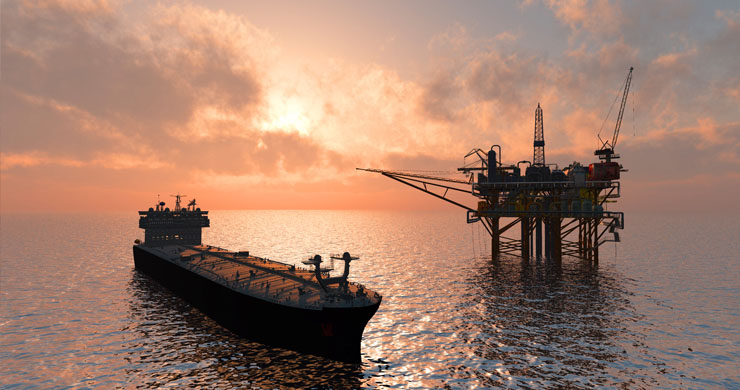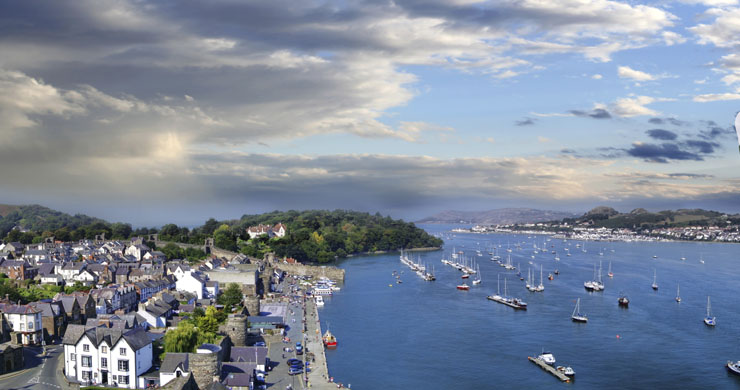Our special coastline
The Welsh coastline is so special because it has so many different coastal environments. There is such a variety of Welsh coastlines because of the variety of different rock types and the variety of energy environments. The Geology or rock type varies from soft river sediment in the South around Cardiff and Newport to hard volcanic rocks in North Wales especially the Llŷn Peninsular. Energy also varies depending on whether a section of coastline is sheltered such as the Severn Estuary or is open to the full force of the open ocean as happens in South West Wales.
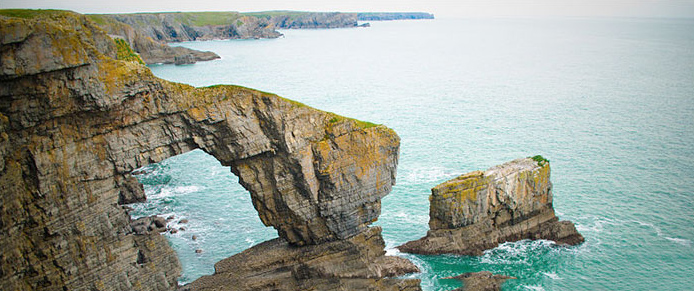
Green Bridge of Wales
The energy that affects a section of coastline is due to the fetch of the waves. This refers to the amount of open ocean that waves travel over. Some of the coastlines in the Southwest of Wales face thousands of miles across the Atlantic and some of the North Wales coasts face thousands of miles to the violent North Atlantic. A longer fetch usually results in stronger waves and is known has a high energy environment.
Wales has many estuaries, where rivers meet the sea, such as the Dee, Loughor and Severn. These estuaries are low energy environments and sand, stones and mud are carried in the rivers and are dropped to make new land. In estuaries, huge amounts of very small mud particles (called clay) are carried down the rivers. When the clay particles reach the saltwater of the sea they become electrically charged, which causes them to stick together. When they get big enough they sink to form mud flats which are soon covered by grasses such as these on the River Dee in North Wales.
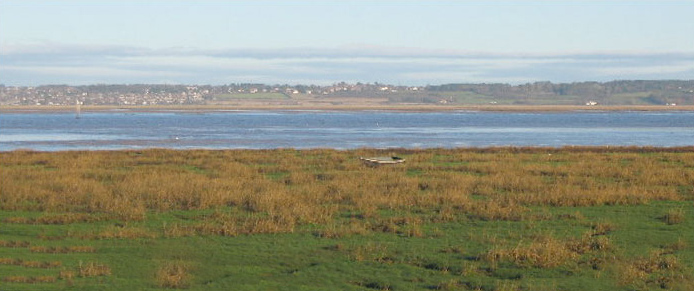
The Dee Estuary
Much of West Wales has a lower energy environment because it is sheltered by Ireland. This has helped lead to the beautiful beaches of Cardigan Bay. Further South and North are the rugged rocky coastlines of Pembrokeshire and The Llŷn Peninsular.
Beaches are formed from deposits of sand and so must occur in lower energy environments. Rocky cliffs are clearly undergoing erosion so must be formed in a high energy environment, but why do we find them next to each other? Surely beaches should be in sheltered areas and cliffs in exposed areas - but different rock types can create sheltered areas even in high energy environments such as Pembrokeshire.
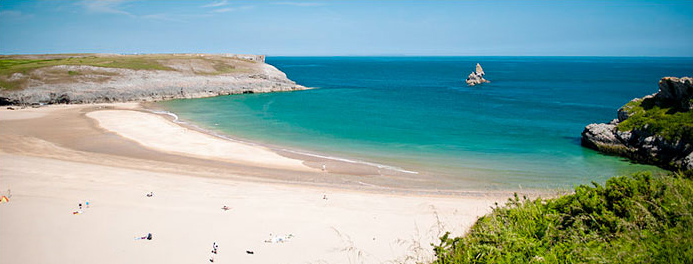
Broadhaven
This is Broadhaven beach and it is in a very high energy environment. However there is a band of softer rock sandwiched between harder rocks. The soft rock has been eroded to form a bay which is now sheltered by the hard rocks on each side which have been left as headlands. In this sheltered location, deposits of sand have built up this fabulous beach.
Hard rocks left as headlands can develop some of the most spectacular landforms seen anywhere. As waves approach a headland the shallower water in front of the headland slows the waves down while the deeper water ahead of a bay allows the waves to keep moving quickly. As a result waves actually wrap themselves around headlands and attack them from the sides. This allows the waves to open up cracks through a headland to from caves, which can join to form arches which can even collapse to allow pillars of stone in the sea called stacks. This one is called the Green Bridge in Pembrokeshire.

